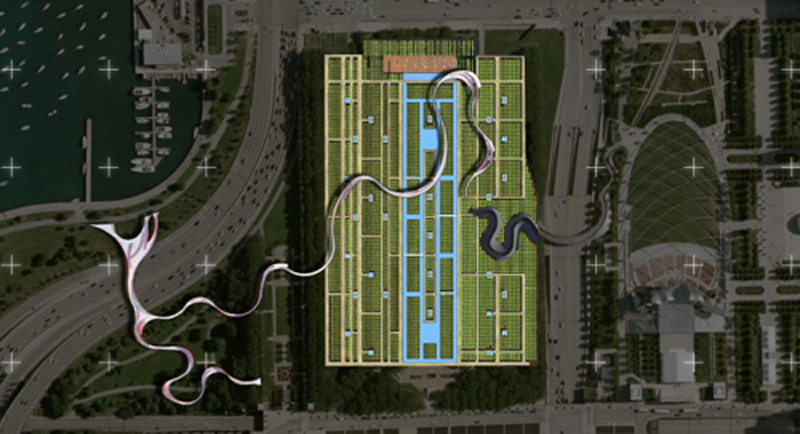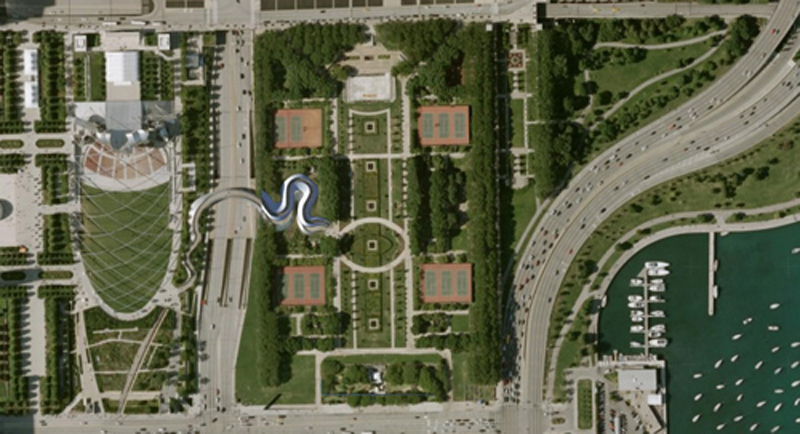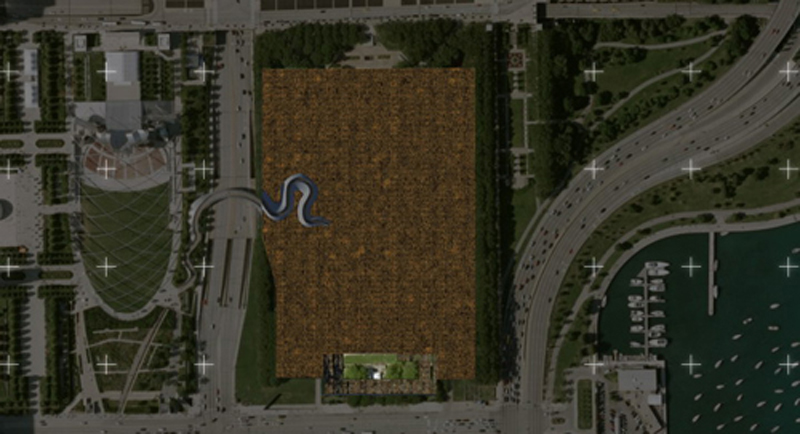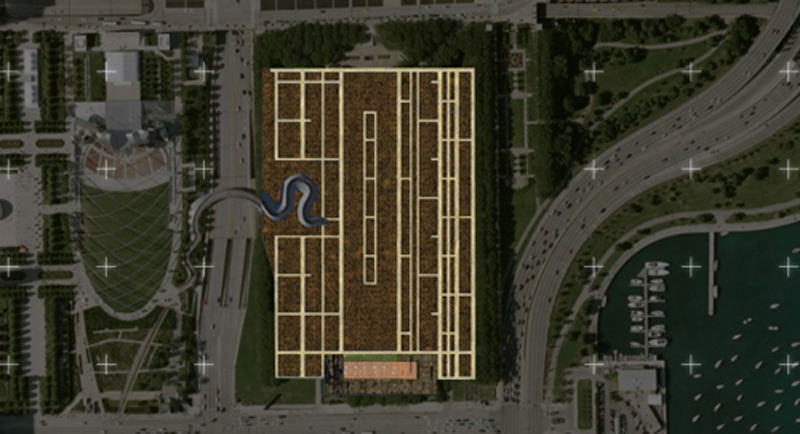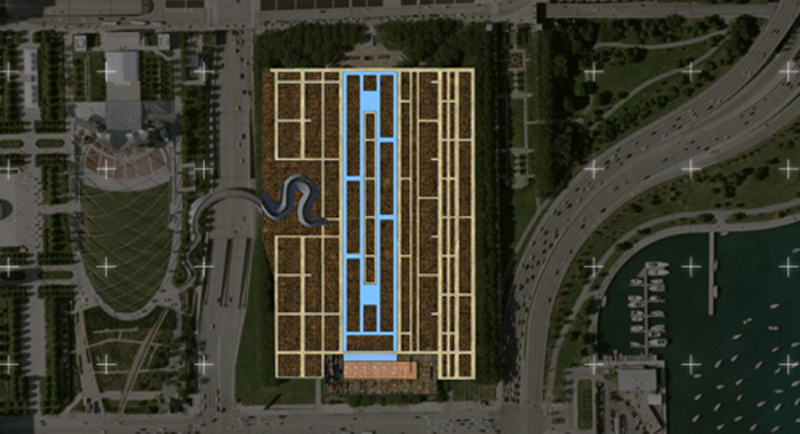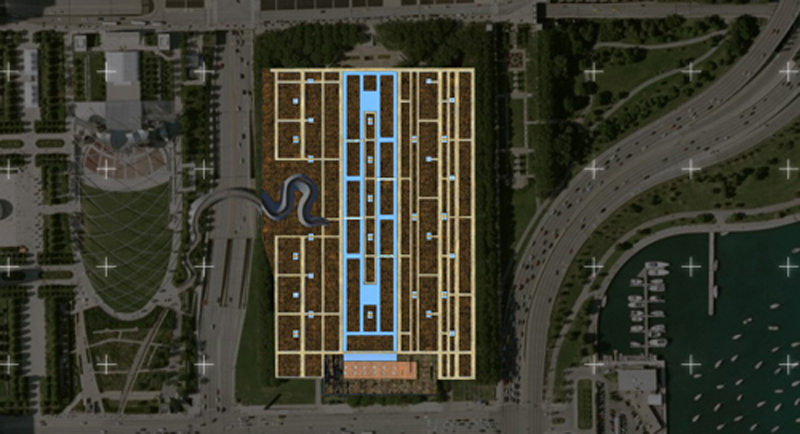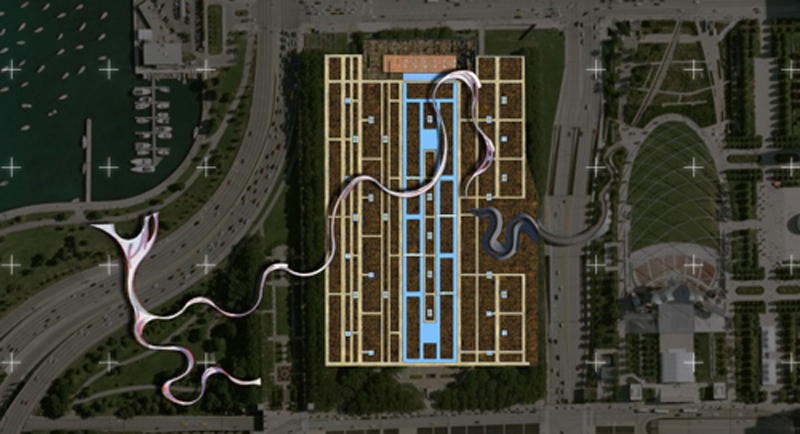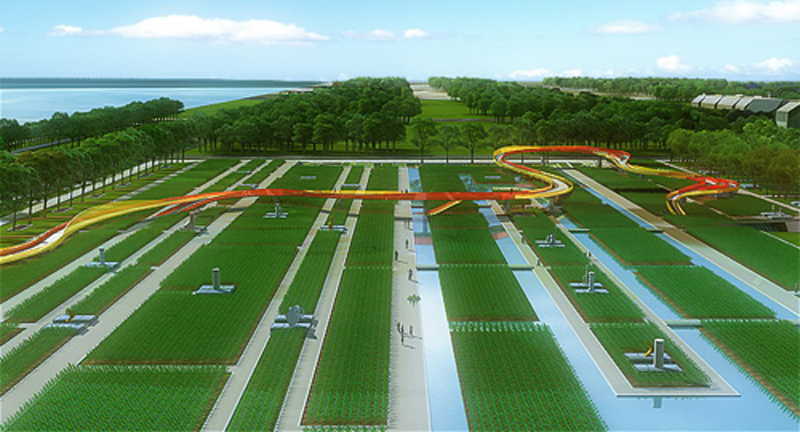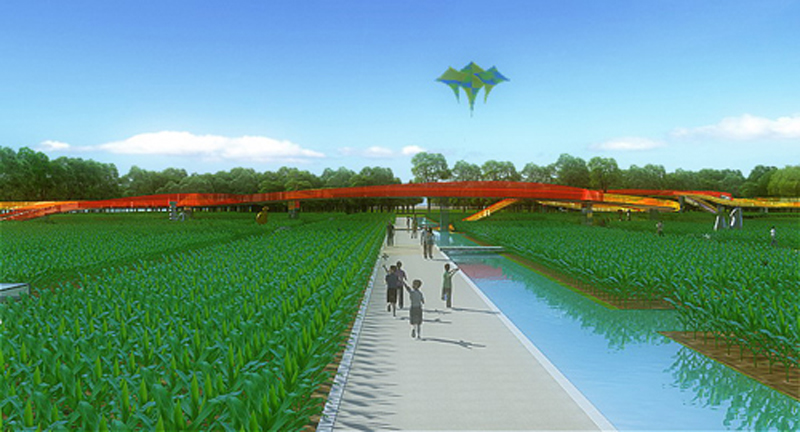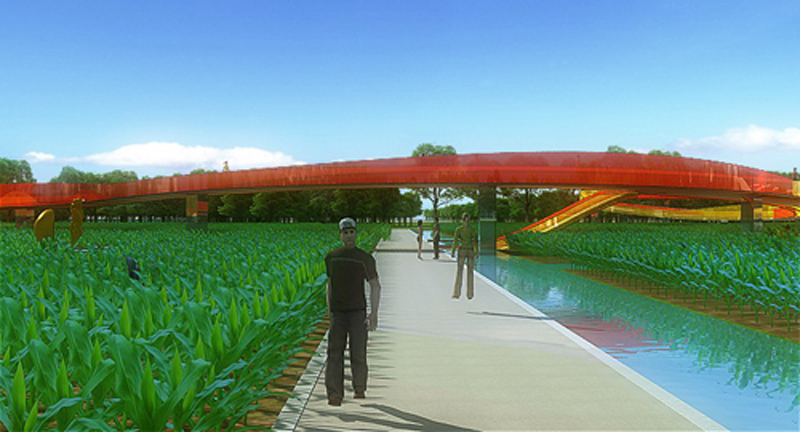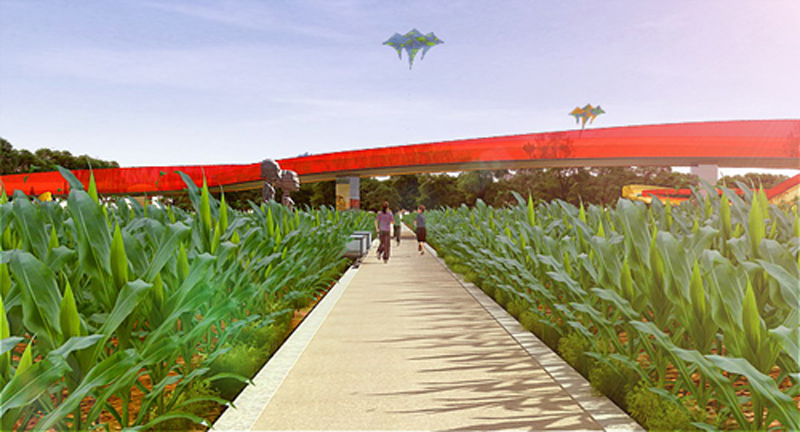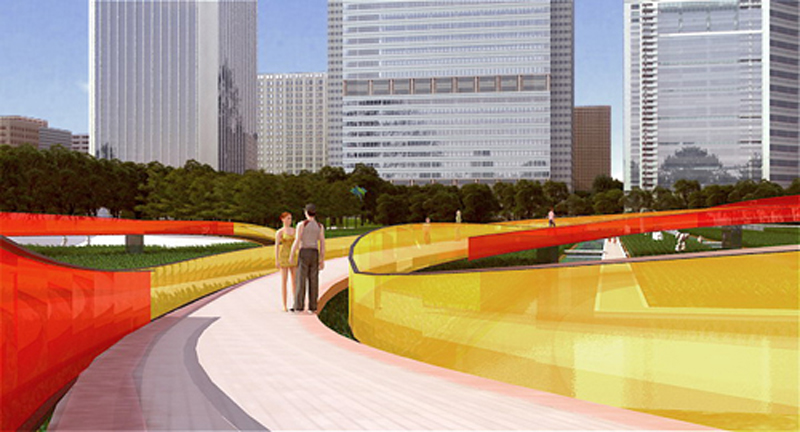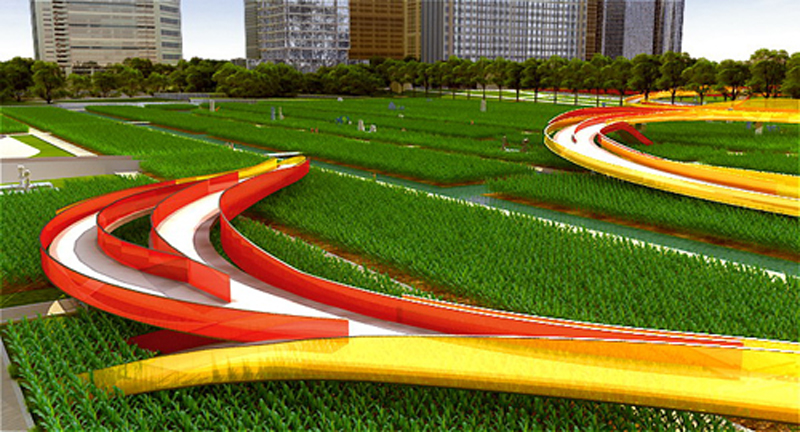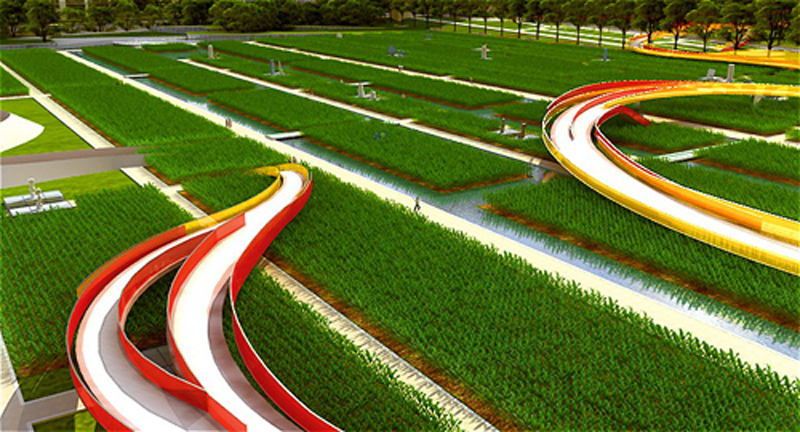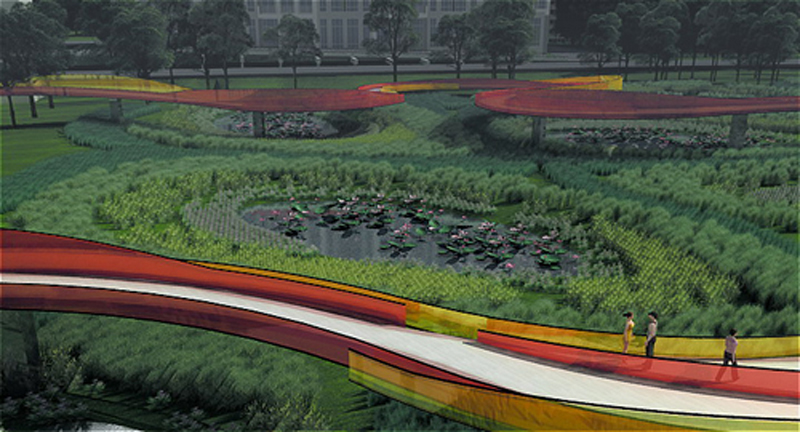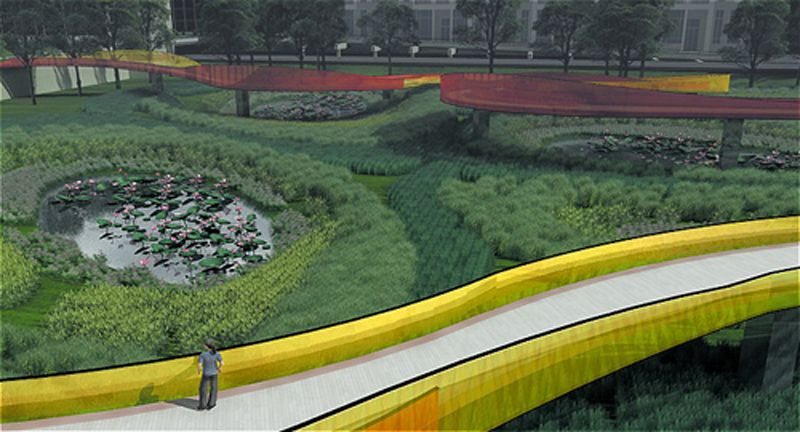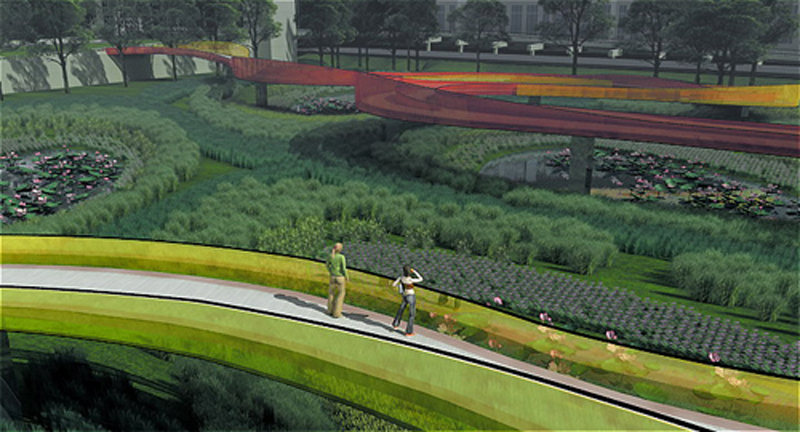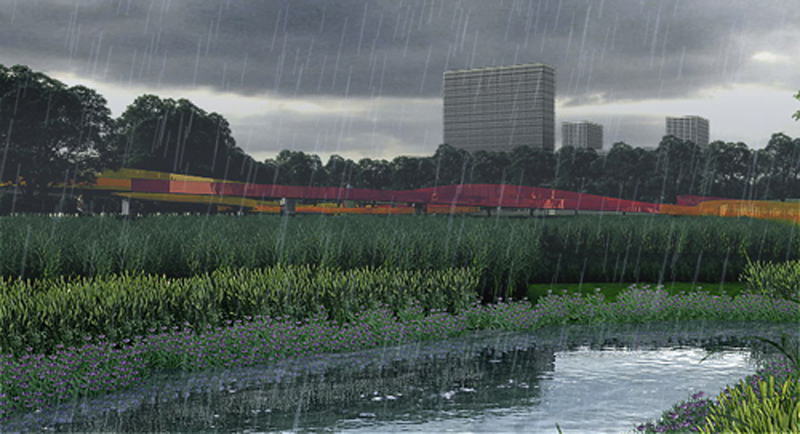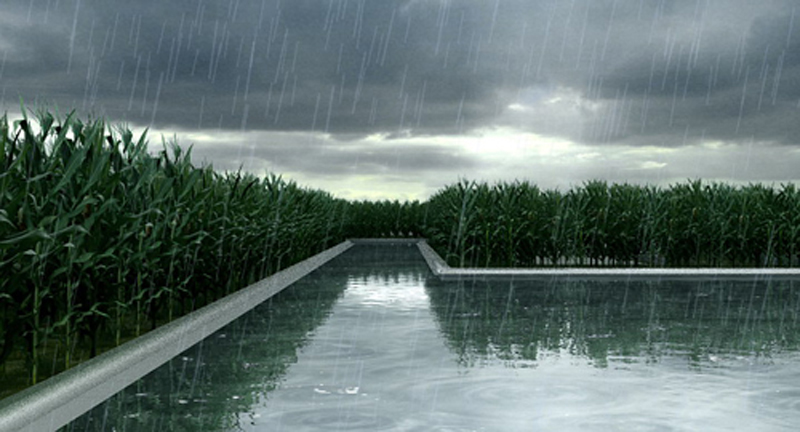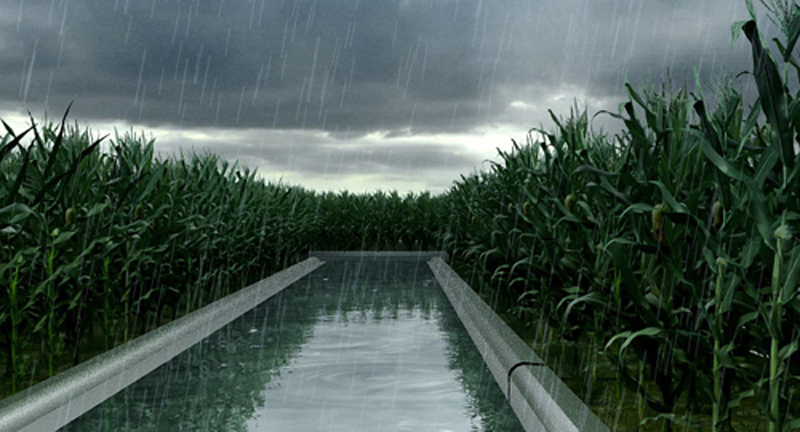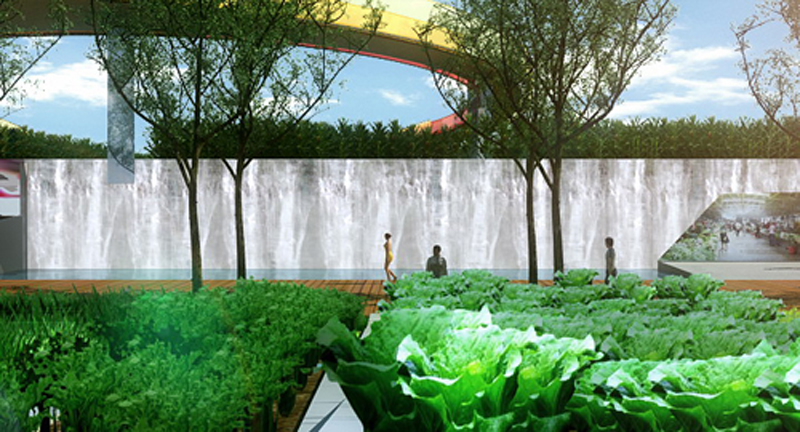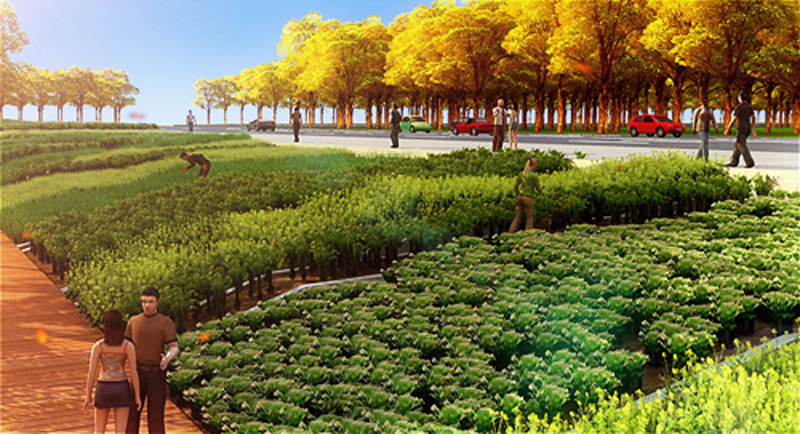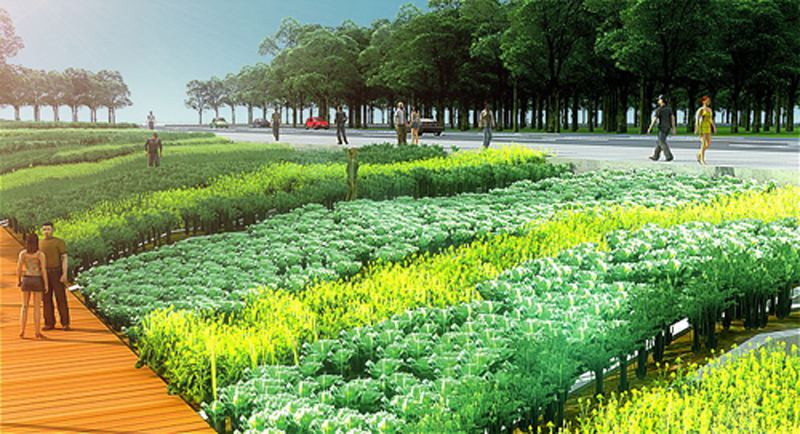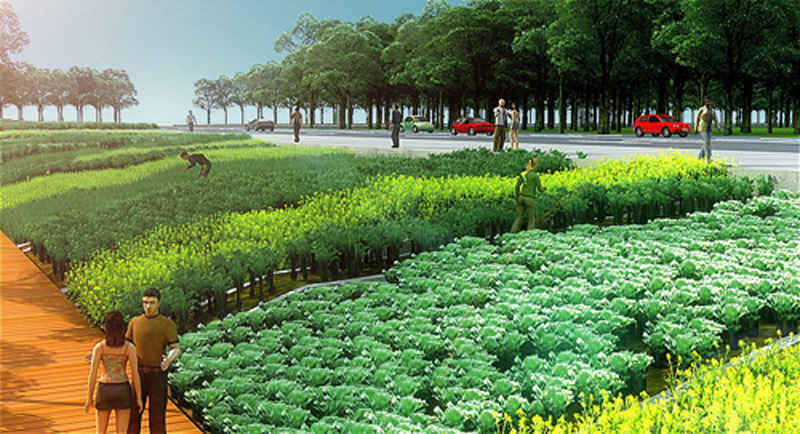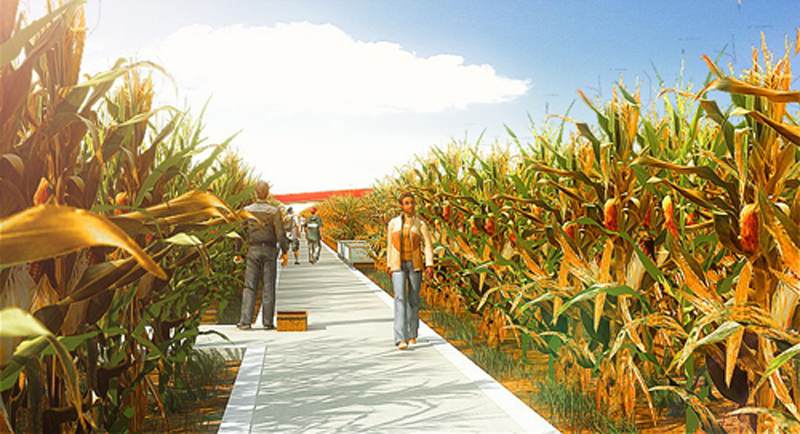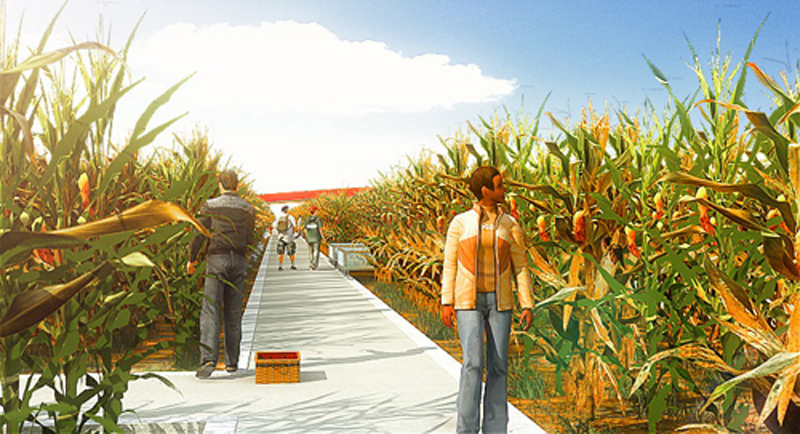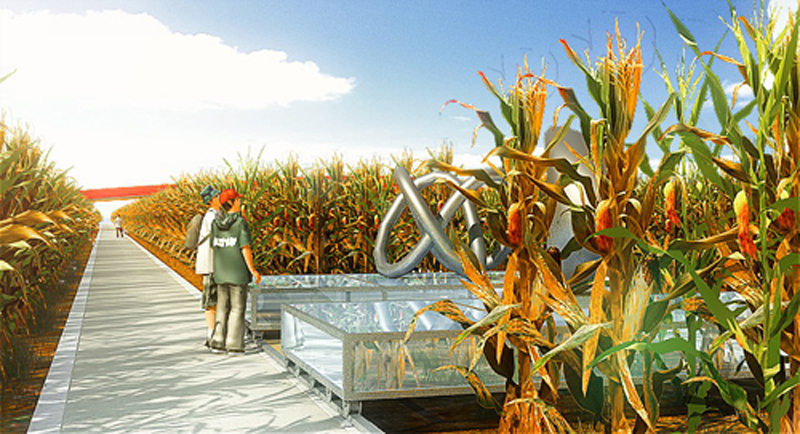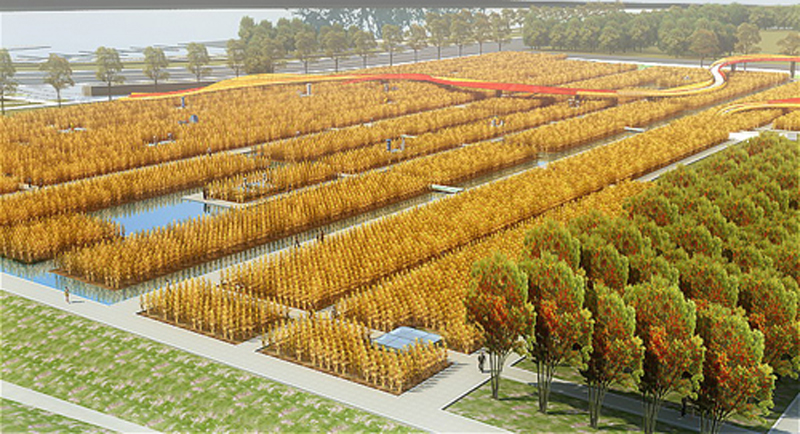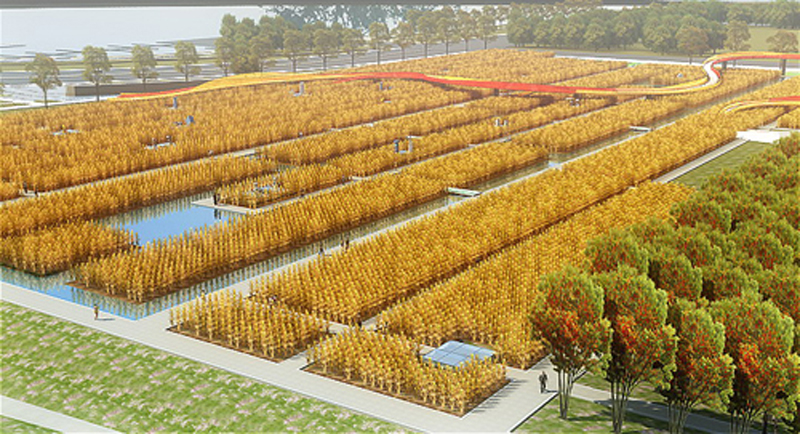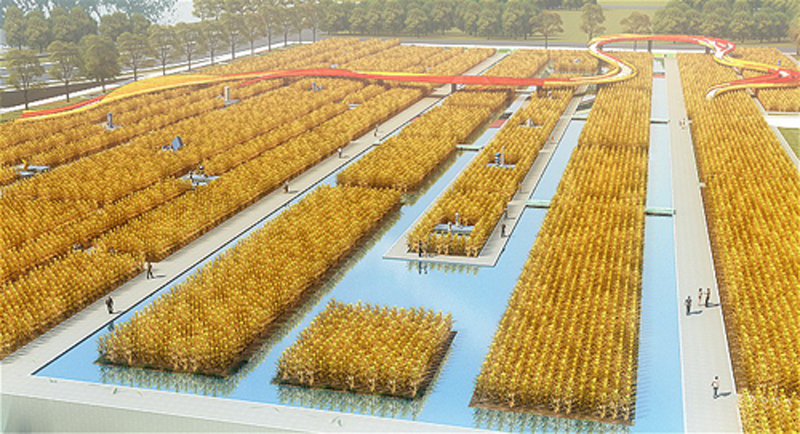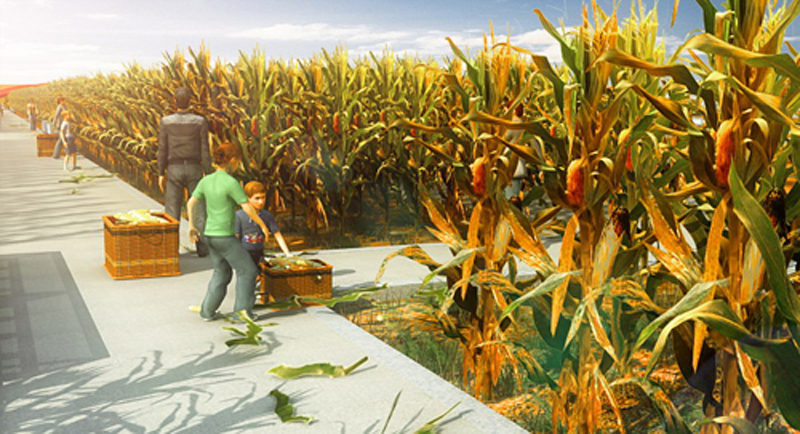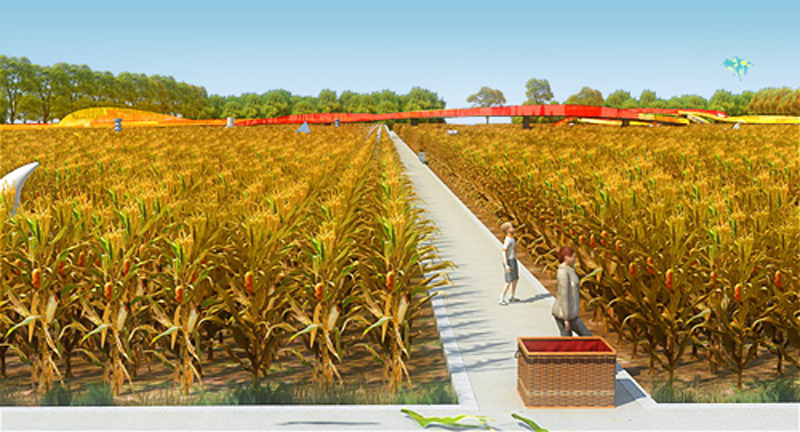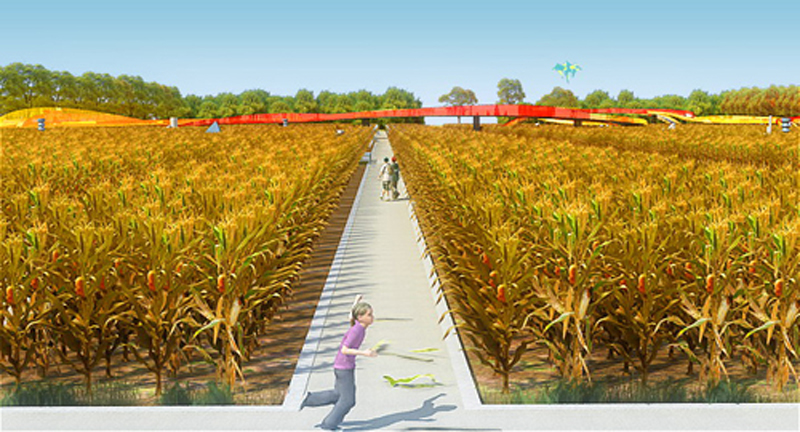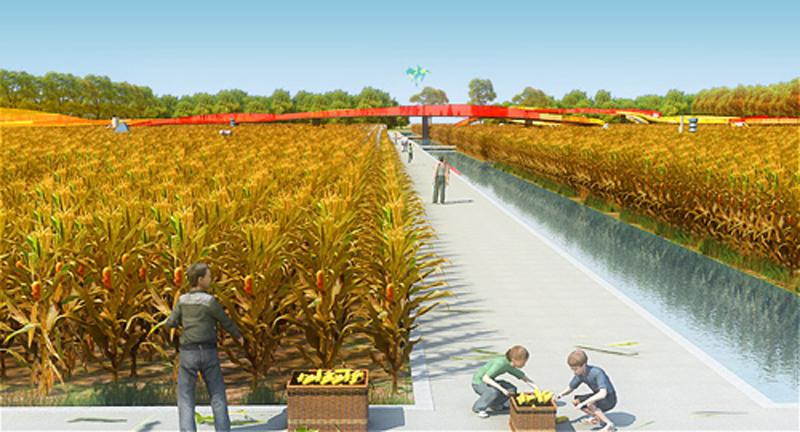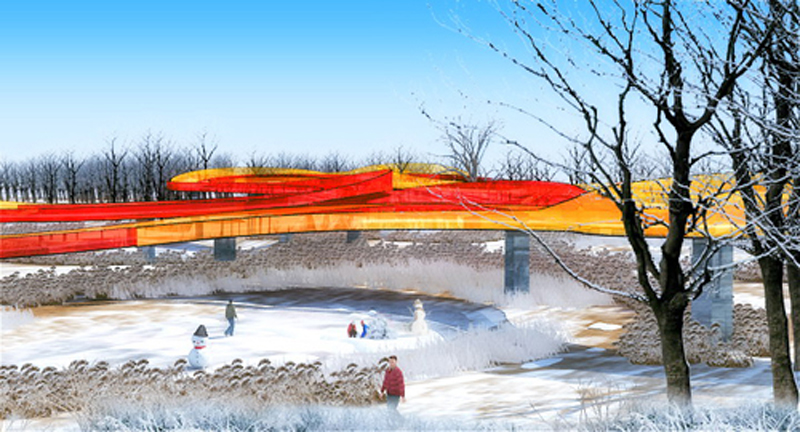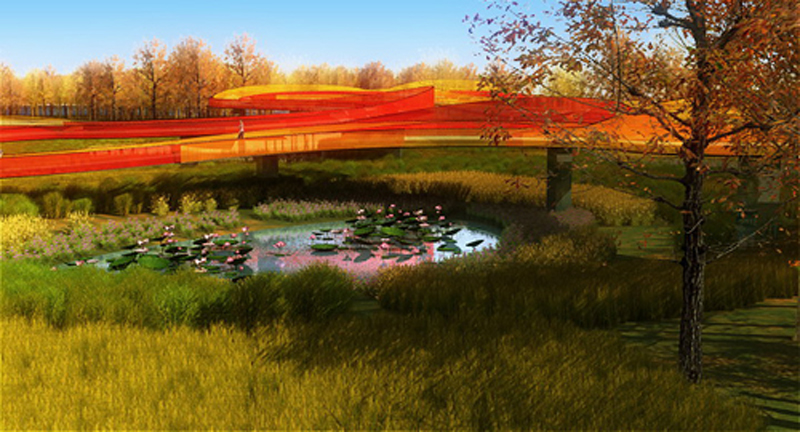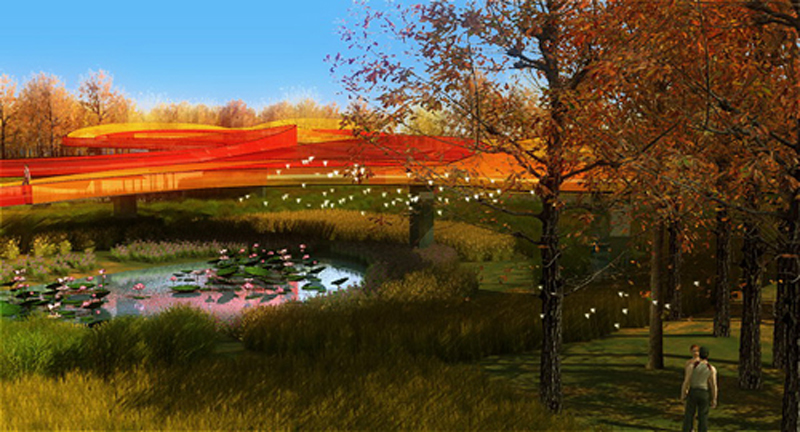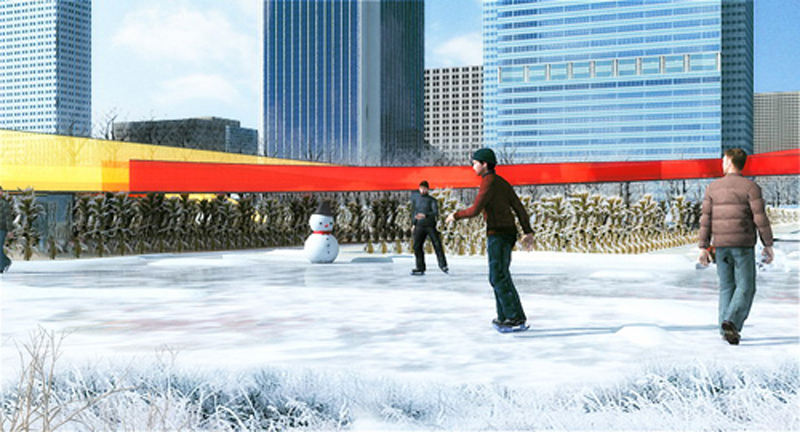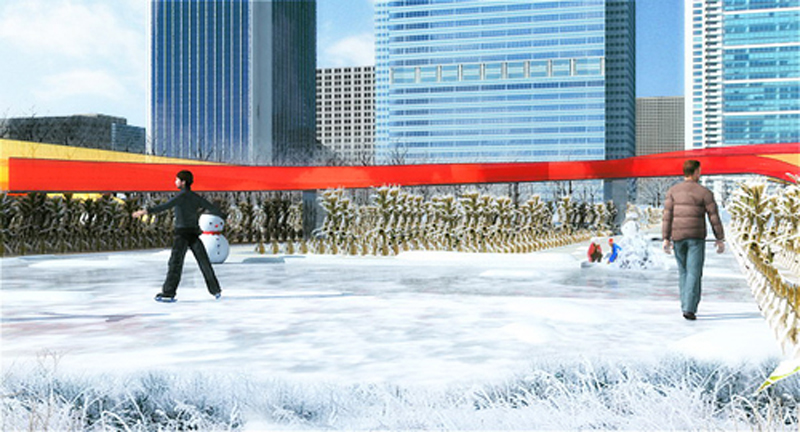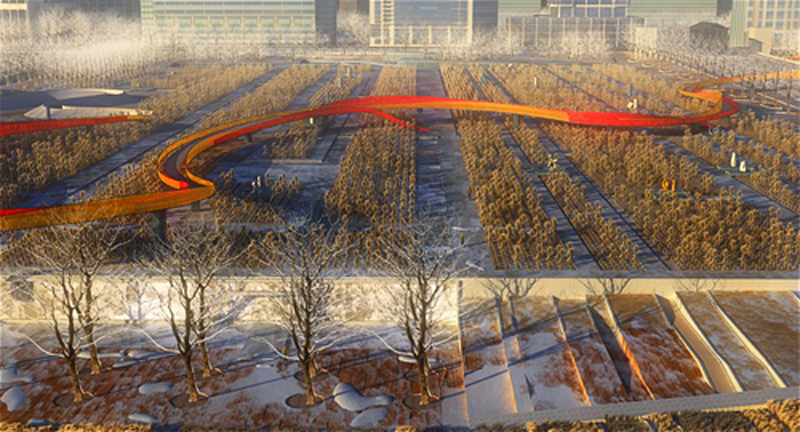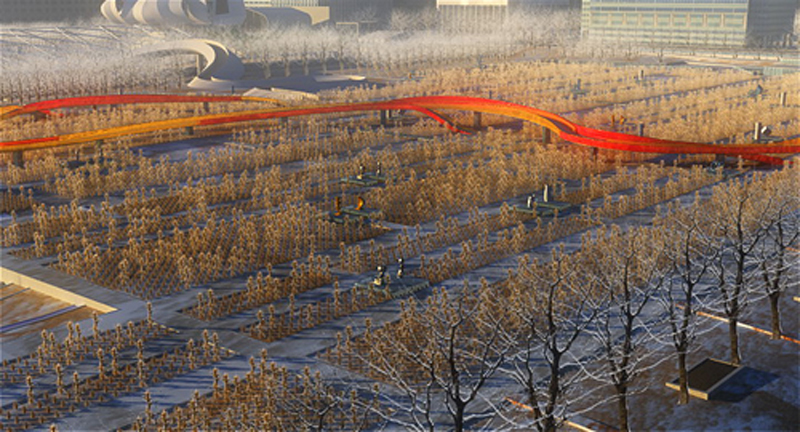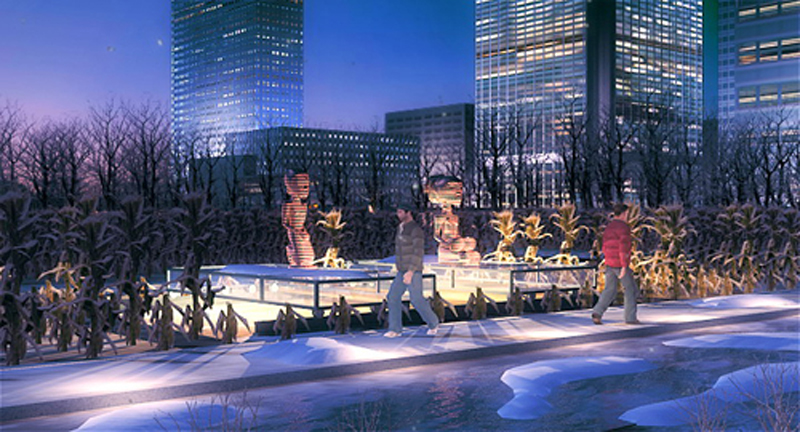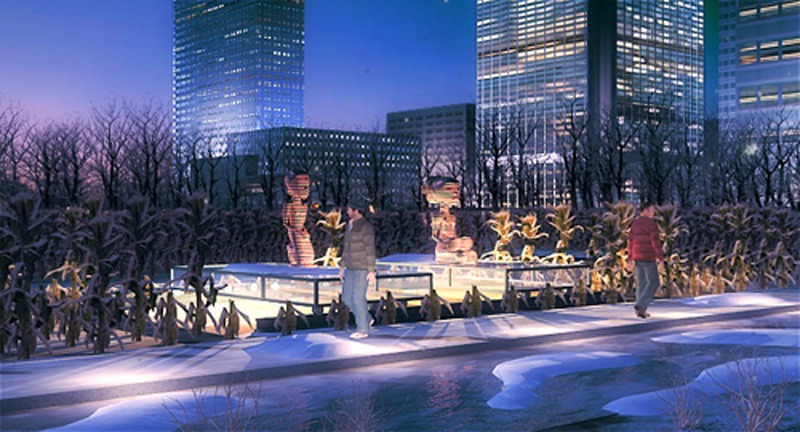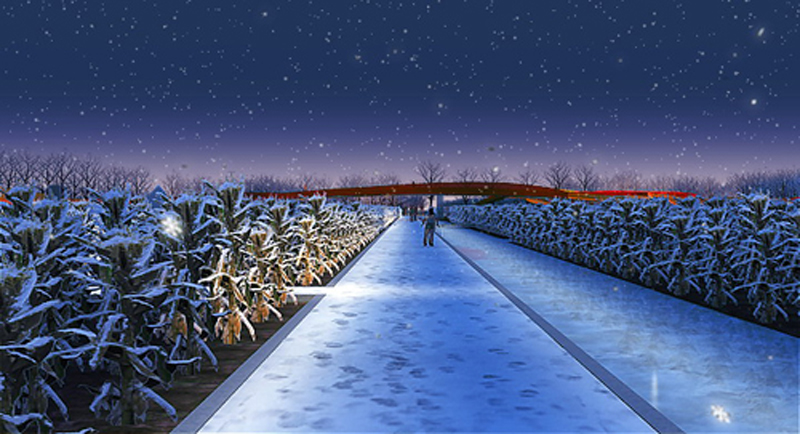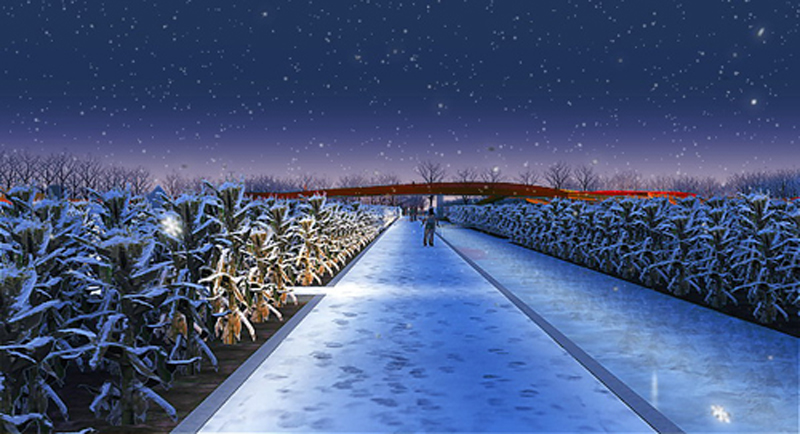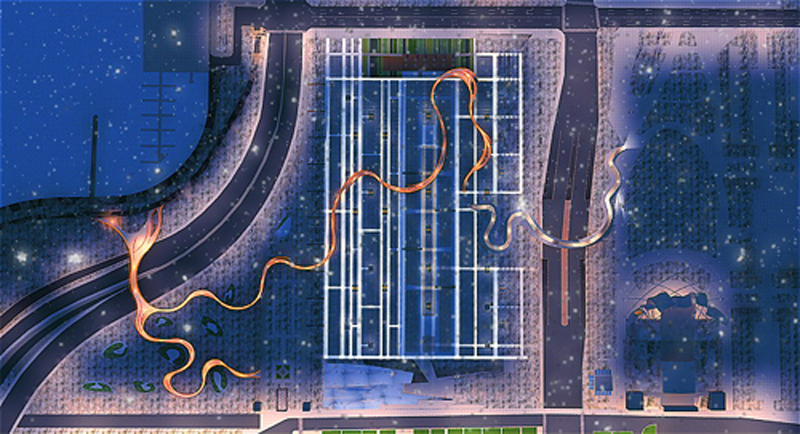Chicago North Grant Park
2011-04-15
Share
Project Information
- Project Location:
- USA Chicago, Illinois, USA
- Project Scale:
- 26.5 acres (10.7 hectares)
- Design Time:
- 2009-8-
- Build Time:
- 2010--
- Client:
- Design and Construction Administration Services, Central Park District, Chicago, Illinois
Project Profile
The Art Field: The Chicago North Grant Park A proposal for Design and Construction Administration Services, Central Park District, Chicago, Illinois, August 2009 26.5 acres (10.7 hectares) Turenscape in association with the American firm JJRThe Chicago Art Field is proposed to be a cultural emblem and a canvas on which the natural cycles of the metropolitan landscape can occur. The cornfield, the identifying feature of the Field, is both a symbol of Chicago’s agrarian heritage and a continually regenerating agricultural process. Among the crops, various art installations, performances, children’s playgrounds, ice skating rinks, meeting places, and observation decks will have their own cycles in tandem with the progression of the seasons. The planting and harvesting of the Field each year will become s community event to support the continued renewal of Chicago’s vitality.
The North Grant Park is now composed of the 20-acre Daley Bicentennial Plaza (a parking garage), the 6.5-acre Cancer Survivor’s Garden, and Peanut Park. Due to the renovation of the garage, the Plaza will be removed.
The design is presented with several challenges. First it must address its historical context. A given urban axis is to be preserved and new references to architecture itself (prominent in Chicago’s history) will be created. The second challenge is to address the temporary character of the park and find viable technical solutions for the short- and long-term maintenance of a park built on a roof. The third challenge is to transform the mobility activities at the east end of the North Grant Park into an active community gathering place.
The conception of the Field is built around five design strategies:
(1) Agricultural and Adaptable LandscapeCorn fields evoke a productive landscape solution linked to the cultural and agricultural heritage of the city and region and offer effective and low cost solution that will give the project flexibility in the use of the space. Corn fields can grow in shallow soil; they impose a low construction load on the structure beneath.
The crops, orchards, and vegetable garden are a main focus but become a background for art installations and winter activities.
(2) Water Harvesting
Rainwater is collected on site and urban stormwater is harvested from the surrounding streets and guided through channels in the Field into nine wetland ponds, arranged strategically in a natural filtration system, and into the waterfall at the south end. The channels make water available for irrigation while offering recreational wading paths in summer and linear skating surfaces in winter.
The wetland serves as a protective and restorative habitat at the edge of the city, where birds, small animals, and plants can flourish and be seen the Skywalk and Viewing Platforms above. This swampy area will hold native “wild leeks” found on site during the city’s first construction.
(3) Geometric Pattern
The Field paths create geometrical patterns that divide spaces orthogonally and recall the city’s architectural heritage.
(4) Sky Walk
A Sky Walk curvilinear bridge cuts through the geometrical pattern diagonally and lands at the lakeside of Lakeshore Drive. A single curving line through the Field offers a minimal intervention with observation vantage points for walkers. The Sky walk allows nature to be untouched.
Promotion of art in Chicago has been important and is reflected in the Art Field name. The Park becomes a place for art exhibitions organized in thirty spots for: five orchard exhibits, eleven corn exhibits, and fourteen multimedia art exhibits. The layering of discrete elements in the landscape of the Field is more than an organizational tool; it helps to give greater meaning to the experience of the place. Juxtapositions and adjacencies create the unexpected connections of art and agriculture, people watching and bird watching, farming and community gardening.
